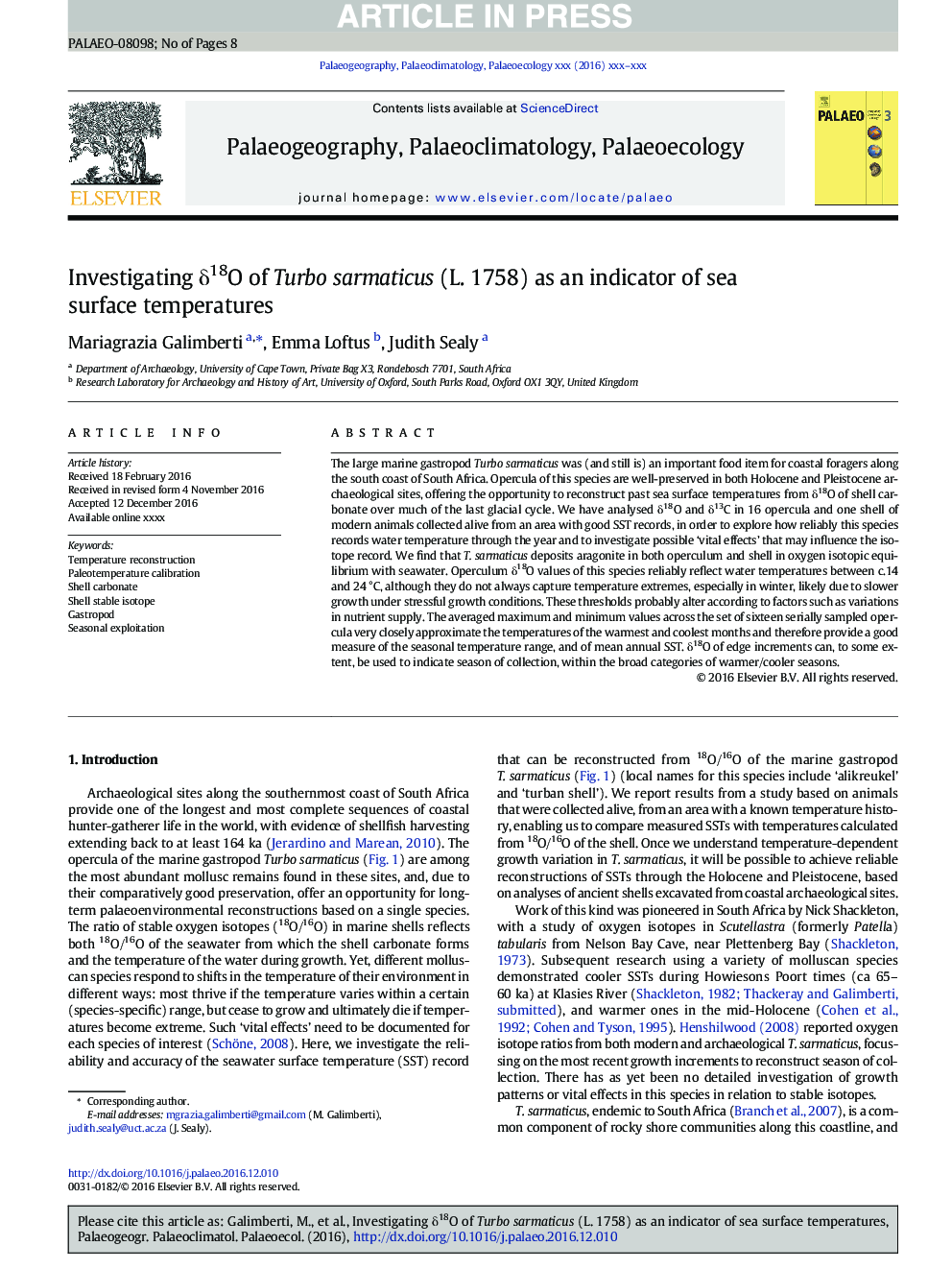| Article ID | Journal | Published Year | Pages | File Type |
|---|---|---|---|---|
| 5755660 | Palaeogeography, Palaeoclimatology, Palaeoecology | 2017 | 8 Pages |
Abstract
The large marine gastropod Turbo sarmaticus was (and still is) an important food item for coastal foragers along the south coast of South Africa. Opercula of this species are well-preserved in both Holocene and Pleistocene archaeological sites, offering the opportunity to reconstruct past sea surface temperatures from δ18O of shell carbonate over much of the last glacial cycle. We have analysed δ18O and δ13C in 16 opercula and one shell of modern animals collected alive from an area with good SST records, in order to explore how reliably this species records water temperature through the year and to investigate possible 'vital effects' that may influence the isotope record. We find that T. sarmaticus deposits aragonite in both operculum and shell in oxygen isotopic equilibrium with seawater. Operculum δ18O values of this species reliably reflect water temperatures between c.14 and 24 °C, although they do not always capture temperature extremes, especially in winter, likely due to slower growth under stressful growth conditions. These thresholds probably alter according to factors such as variations in nutrient supply. The averaged maximum and minimum values across the set of sixteen serially sampled opercula very closely approximate the temperatures of the warmest and coolest months and therefore provide a good measure of the seasonal temperature range, and of mean annual SST. δ18O of edge increments can, to some extent, be used to indicate season of collection, within the broad categories of warmer/cooler seasons.
Related Topics
Physical Sciences and Engineering
Earth and Planetary Sciences
Earth-Surface Processes
Authors
Mariagrazia Galimberti, Emma Loftus, Judith Sealy,
